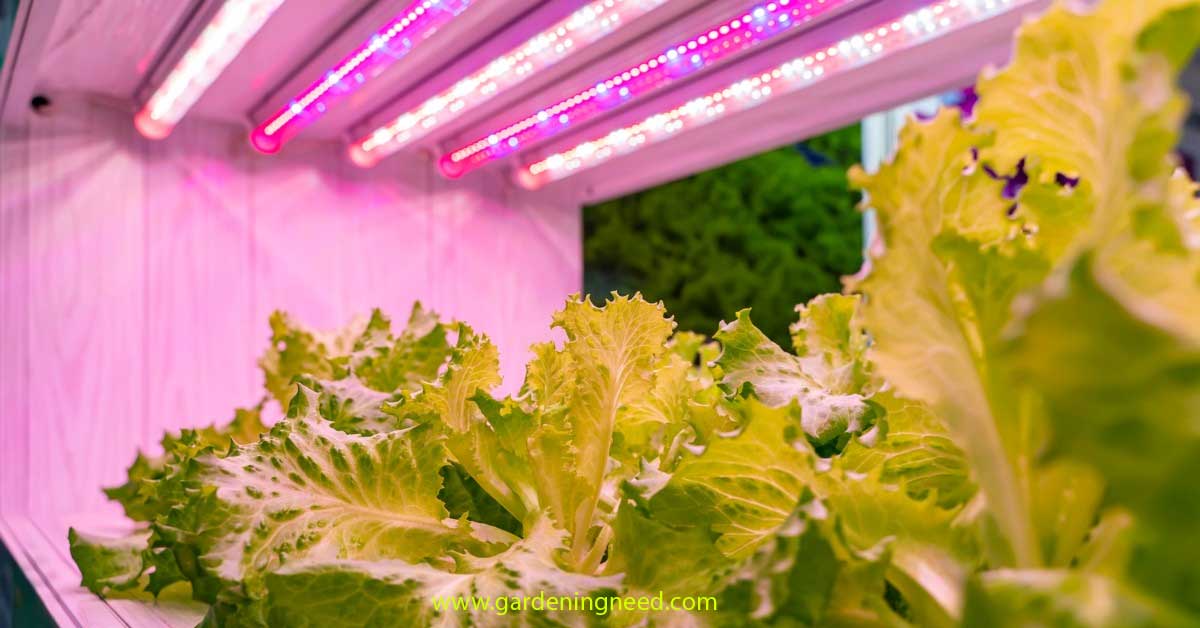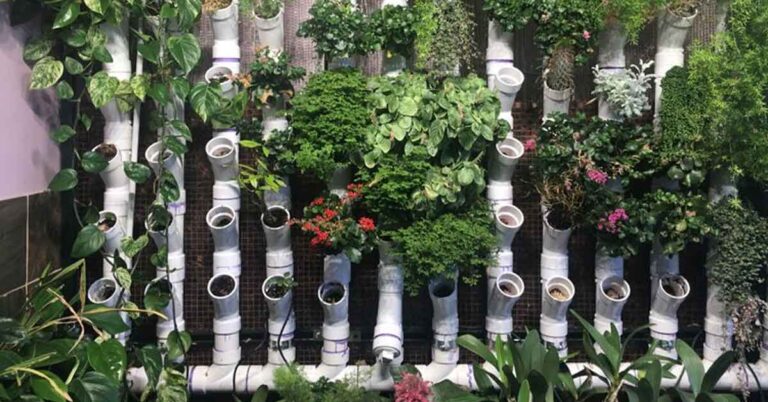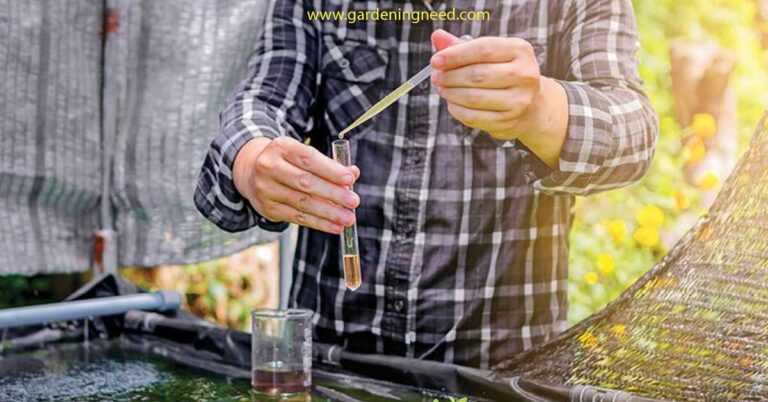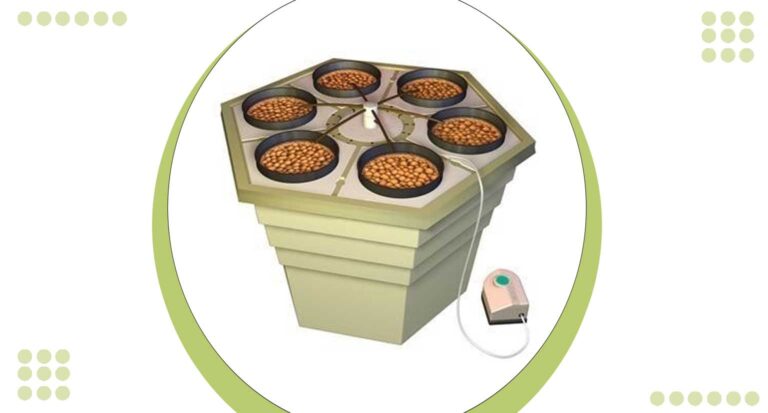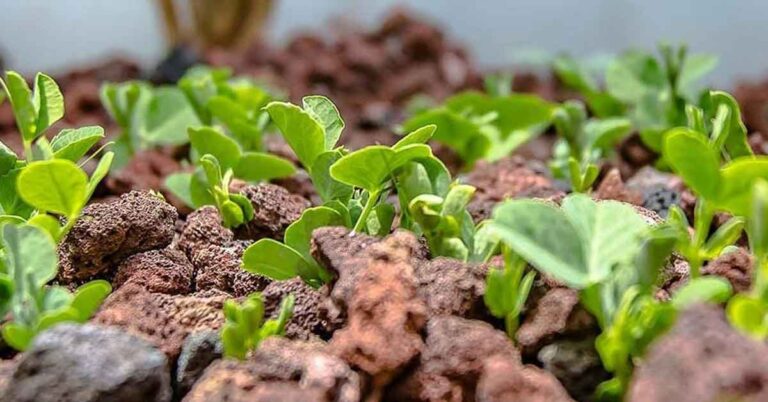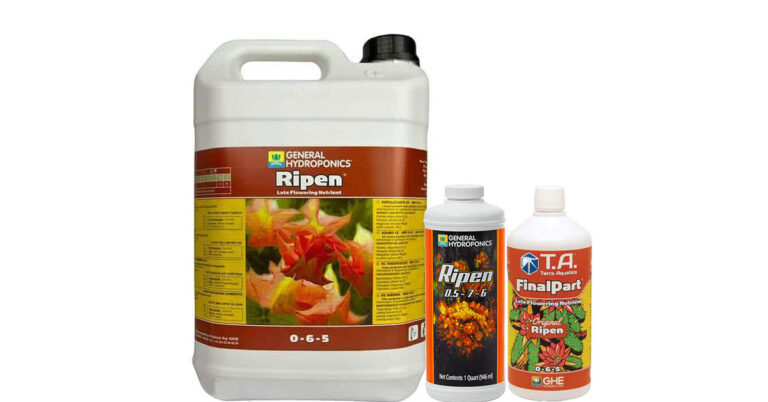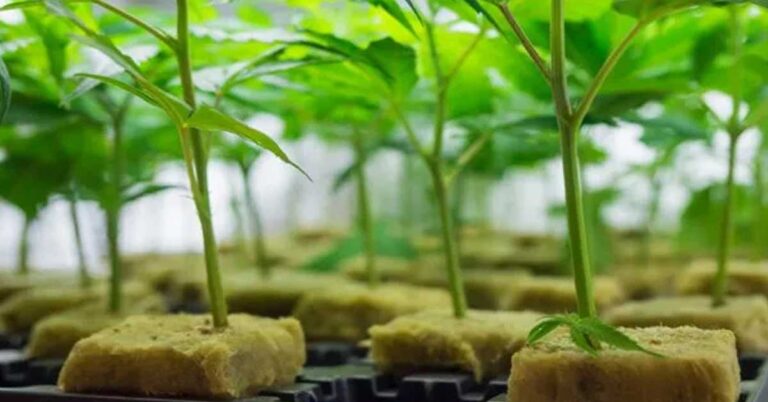Hydroponic Lettuce Light Requirements
Welcome to the world of hydroponic gardening, where you can grow fresh and healthy lettuce right in the comfort of your home. Hydroponics is an innovative and efficient way of cultivating plants without soil, providing them with the essential nutrients they need for optimal growth. For lettuce enthusiasts, hydroponics opens up a world of possibilities, allowing you to enjoy a steady supply of nutrient-rich leafy greens all year round.
In this article, we’ll dive into the specific light requirements that lettuce plants have in a hydroponic setup. Understanding the importance of light and how it affects your lettuce’s growth will help you achieve the best possible results and enjoy a bountiful harvest. So, let’s explore the fascinating world of hydroponic lettuce light requirements and learn how to set up the perfect environment for your thriving lettuce garden.
Hydroponic Lettuce Light Requirements
Type of Light
When it comes to hydroponic lettuce cultivation, choosing the right type of light is crucial for the success of your plants. While natural sunlight can be ideal, it may not always be readily available, especially in indoor gardening setups. In such cases, artificial grow lights become essential to provide the necessary light spectrum for your lettuce.
There are various types of grow lights available, such as fluorescent lights, metal halide, and LED grow lights. Each type has its advantages, but for lettuce plants, fluorescent lights and LEDs are commonly used due to their energy efficiency and ability to emit the right wavelengths that promote healthy growth.
Light Spectrum
Understanding the light spectrum is key to meeting your hydroponic lettuce’s specific needs. In the natural sunlight spectrum, different colors have different effects on plant growth. For lettuce, blue and red light spectrums are crucial during different stages of growth.
Blue light is essential for promoting vegetative growth and the development of strong and healthy leaves. On the other hand, red light is vital for encouraging flowering and fruiting. LED grow lights are popular because they allow you to customize the light spectrum, providing the right balance of blue and red light for each growth stage of your lettuce plants.
Amount of Light
Getting the right amount of light is just as important as choosing the correct spectrum. Lettuce plants require a certain number of hours of bright light each day for optimum growth. On average, lettuce needs around 14 to 16 hours of light during the vegetative stage and around 10 to 12 hours during the flowering stage.
Too little light can result in elongated and weak lettuce plants, while too much light may lead to heat stress or bleaching of the leaves. To ensure your lettuce receives the right amount of light, you can use timers to control the lighting schedule and maintain consistent and appropriate light exposure.
By understanding the type of light, the light spectrum, and the amount of light your hydroponic lettuce needs, you can create an optimal lighting environment that will promote healthy and abundant growth, allowing you to enjoy a continuous supply of fresh and delicious lettuce throughout the year.
Hydroponic Systems and Lettuce Varieties
Types of Lettuce
When it comes to hydroponic lettuce cultivation, you have the exciting opportunity to grow a variety of lettuce types, each with its unique flavors, textures, and colors. Some popular lettuce varieties that thrive in hydroponic systems include:
1. Romaine Lettuce: Known for its long, sturdy leaves and crisp texture, romaine lettuce is a favorite in salads and sandwiches.
2. Bibb Lettuce: This small, loose-headed lettuce has tender leaves and a sweet, buttery flavor, making it perfect for gourmet salads.
3. Iceberg Lettuce: Recognizable by its dense, round head, iceberg lettuce has a mild taste and adds a refreshing crunch to dishes.
4. Butterhead Lettuce: With tender and loosely bunched leaves, butterhead lettuce offers a delicate, buttery taste that melts in your mouth.
5. Leaf Lettuce: This loose-leaf variety comes in various colors and shapes, providing a mix of flavors and textures in your salads.
6. Summer Crisp Lettuce: Also known as Batavia lettuce, this variety combines the traits of leaf and romaine lettuces, offering a delightful blend of crunch and tenderness.
Hydroponics Systems
Hydroponic systems come in different designs, each catering to specific needs and available space. When growing lettuce, some popular hydroponic systems to consider include:
1. Nutrient Film Technique (NFT): This system involves a continuous flow of nutrient-rich water over the plant roots, providing a consistent supply of essential elements.
2. Deep Water Culture (DWC): In this system, the plant roots are submerged in a nutrient solution, ensuring efficient nutrient uptake and oxygenation.
3. Drip System: Drip systems deliver nutrient solutions directly to the plant roots through a network of tubes, ensuring controlled and precise irrigation.
4. Ebb and Flow (Flood and Drain): This system periodically floods the plant roots with nutrient solution and then allows it to drain, providing both moisture and oxygen to the roots.
5. Wick System: A simple and passive system, the wick method uses a wick to draw nutrient solution from a reservoir to the plant roots.
6. Aeroponics: In aeroponic systems, plant roots are suspended in the air, and a fine mist of nutrient solution is sprayed directly onto the roots.
Each hydroponic system has its advantages and may be better suited for specific lettuce varieties or available space. Experimenting with different systems and lettuce types will help you find the best combination that yields excellent results for your hydroponic lettuce garden.
Light and Temperature Considerations
Temperature Requirements
Temperature plays a crucial role in the success of your hydroponic lettuce garden. Lettuce plants have specific temperature preferences for both air and water to thrive optimally. In general, the ideal air temperature range for lettuce growth is between 60°F to 70°F (15°C to 21°C).
When it comes to the water temperature, it should be slightly warmer than the air temperature to promote efficient nutrient uptake. Aim for a water temperature of around 68°F to 72°F (20°C to 22°C). Keeping the temperature within these ranges will ensure that your lettuce plants stay healthy and vibrant.
Cooler Temperatures and Lettuce Growth
Lettuce is considered a cool-weather crop, and it tends to perform best in cooler temperatures. Cooler conditions not only encourage better growth but also prevent premature bolting (flowering) of the lettuce, which can negatively affect its taste and texture.
If you are growing lettuce indoors or in a controlled environment, you can easily maintain the desired cooler temperatures. However, during warmer months or in hot climates, you might need to take extra measures to cool down the growing area. Here are some tips to help you maintain cooler temperatures for your lettuce:
1. **Shade Cloth**: Use shade cloth to protect your lettuce from direct sunlight during the hottest parts of the day.
2. **Ventilation**: Ensure proper ventilation in your growing area to allow hot air to escape and cooler air to circulate.
3. **Misting**: Mist the air around your lettuce plants periodically to create a cooling effect.
4. **Chillers**: Consider using water chillers to maintain the optimal water temperature in your hydroponic system.
By providing your hydroponic lettuce with the right temperature conditions, you will witness robust growth, healthy leaves, and ultimately, a bountiful harvest of fresh and flavorful lettuce leaves.
Growing Healthy Lettuce
Seedlings and Young Plants
The early stages of lettuce growth are critical for establishing strong and healthy plants. Whether you’re starting from seeds or young seedlings, giving them the best possible start will set the foundation for a thriving hydroponic lettuce garden.
**1. Seed Germination**: If you’re germinating lettuce seeds, ensure they have access to sufficient moisture and warmth. Use a seed tray with a soilless growing medium, like rockwool cubes, to provide excellent drainage and aeration for the young roots.
**2. Transplanting Seedlings**: If you’re using young seedlings, carefully transplant them into your hydroponic system once they have developed a few sets of true leaves. Handle the delicate roots gently, and make sure they’re well-supported in their new environment.
**3. Light Exposure**: Young lettuce plants require ample light to encourage robust growth. Make sure they receive the right amount of light, preferably 14 to 16 hours of bright light daily, to prevent leggy and weak growth.
Essential Nutrients and Optimal pH Levels
Hydroponic lettuce relies on nutrient-rich solutions for its growth, and maintaining the correct nutrient balance is vital for healthy plants. Additionally, ensuring the right pH levels in the nutrient solution allows for efficient nutrient absorption.
**1. Nutrient Solution**: Lettuce plants thrive when they have access to essential nutrients, including nitrogen, phosphorus, potassium, calcium, and magnesium. Using a high-quality hydroponic nutrient solution formulated for leafy greens will ensure your lettuce receives all the necessary elements for optimal growth.
**2. Electrical Conductivity (EC)**: Monitoring the electrical conductivity of your nutrient solution helps you gauge its nutrient concentration. Aim for an EC level between 1.2 to 2.2 for lettuce, but it’s essential to check the specific recommendations for the nutrient solution you’re using.
**3. pH Level**: The pH level of the nutrient solution influences nutrient availability to the plants. Lettuce prefers a slightly acidic to neutral pH range of 5.5 to 6.5. Regularly test and adjust the pH of your nutrient solution to keep it within this range.
By giving your lettuce seedlings and young plants a nurturing start and providing them with the right balance of essential nutrients and optimal pH levels, you’ll be well on your way to cultivating healthy and vibrant lettuce plants that will delight your taste buds and provide a steady supply of fresh greens.
Fluorescent Lighting Options
Fluorescent lights are a popular and effective choice for providing artificial lighting in hydroponic systems, especially for growing leafy greens like lettuce. They are energy-efficient, cost-effective, and emit the light spectrum necessary for promoting healthy plant growth. When it comes to fluorescent lighting options for your hydroponic lettuce garden, there are a few key factors to consider:
1. **T5 Fluorescent Grow Lights**: T5 grow lights are a top choice for indoor gardeners growing lettuce and other leafy greens. They are highly efficient, producing a significant amount of light while consuming relatively little energy. T5 lights also have a good light output, making them suitable for all stages of lettuce growth.
2. **T8 Fluorescent Grow Lights**: T8 lights are another option for hydroponic lettuce cultivation. They are slightly less efficient than T5 lights but still provide ample light for vegetative growth. If you already have T8 fixtures in place, they can be a cost-effective choice.
3. **Color Temperature**: When selecting fluorescent tubes, consider the color temperature they emit. For lettuce growth, tubes in the cool spectrum (around 6500K) are preferred during the vegetative stage, as they mimic natural daylight and promote strong leaf development.
4. **Light Output and Coverage**: Ensure the fluorescent lights you choose have enough light output to cover your entire lettuce garden area. Consider the size of your hydroponic setup and the number of plants you want to grow under the lights.
5. **Mounting Options**: Fluorescent lights can be hung vertically or horizontally, depending on your preference and the layout of your hydroponic system. Make sure the lights are securely mounted to provide even light distribution to all your lettuce plants.
6. **Light Duration**: As mentioned earlier, lettuce typically needs 14 to 16 hours of bright light daily during the vegetative stage. Ensure you set up a timer to control the light duration and maintain a consistent lighting schedule.
Fluorescent lighting offers a cost-effective and reliable solution for providing the right amount of light to your hydroponic lettuce garden. By choosing the appropriate fluorescent lighting options and optimizing their usage, you can create an environment that supports healthy lettuce growth and leads to a successful harvest.
Optimizing Lettuce Growth
Managing Light Cycles and Unfavorable Conditions
Achieving optimal growth for your hydroponic lettuce involves carefully managing light cycles and mitigating unfavorable conditions that may hinder plant development.
**1. Light Cycle Management**: As mentioned earlier, lettuce plants require around 14 to 16 hours of bright light daily during the vegetative stage. Using a timer, set up a consistent light schedule to mimic the natural day-night cycle. Avoid interrupting the dark periods, as this is essential for proper growth and development.
**2. Dealing with High Temperatures**: High temperatures can adversely affect lettuce growth, leading to heat stress and bolting. Implement cooling measures, such as shade cloth, proper ventilation, and misting, to maintain cooler air around your lettuce plants.
**3. Cooler Temperatures during Flowering**: When lettuce starts to flower, it’s crucial to maintain cooler temperatures to prevent the development of bitter-tasting leaves. Ensuring adequate shading and cooling during this stage will improve the overall quality of your lettuce crop.
Indoor Gardening and the Role of Carbon Dioxide
Growing lettuce in an indoor setting allows you to have greater control over environmental factors, including carbon dioxide (CO2) levels. Carbon dioxide is a critical component in photosynthesis, and optimizing its concentration can significantly enhance lettuce growth.
**1. CO2 Enrichment**: Increasing carbon dioxide levels in your indoor hydroponic system can boost the photosynthetic rate of your lettuce plants, resulting in faster and healthier growth. You can use CO2 generators or CO2 tanks to enrich the atmosphere around your lettuce plants.
**2. Monitoring CO2 Levels**: It’s essential to monitor CO2 levels to avoid any potential negative impacts on plant health. Too much CO2 can lead to CO2 toxicity, while too little can limit photosynthesis. Aim for CO2 concentrations between 800 to 1200 parts per million (ppm) for optimal results.
**3. Ventilation**: Proper ventilation is essential when using CO2 enrichment to prevent CO2 buildup and maintain a healthy balance of gases in the growing area.
By effectively managing light cycles, providing appropriate conditions during different growth stages, and optimizing carbon dioxide levels for indoor gardening, you can create an ideal environment that promotes vigorous and thriving lettuce growth. With the right care and attention, your hydroponic lettuce garden will yield abundant and delicious results.
Hydroponic Techniques for Lettuce
Hydroponic techniques offer various innovative and efficient methods to cultivate lettuce without soil, providing plants with the necessary nutrients for optimal growth. Let’s explore some of the most popular hydroponic techniques used for growing lettuce:
Nutrient Film Technique (NFT)
In the Nutrient Film Technique (NFT), a thin film of nutrient-rich water continuously flows over the bare roots of the lettuce plants, allowing them to absorb essential nutrients and oxygen. The excess nutrient solution is then collected and recirculated through the system. NFT is well-suited for fast-growing plants like lettuce and ensures efficient nutrient delivery to the roots.
Deep Water Culture (DWC)
Deep Water Culture (DWC) is a straightforward hydroponic method where the plant roots are suspended in a nutrient solution, allowing them to access oxygen directly. The lettuce plants float on the surface of the water, and their roots absorb nutrients from the solution. DWC is easy to set up and provides excellent aeration for healthy root development.
Drip System
The Drip System is one of the most commonly used hydroponic techniques. In this method, a pump delivers nutrient solution through a network of tubes, and drippers or emitters release the solution near the plant roots. Excess solution drips back into the reservoir for reuse. Drip systems are versatile, allowing precise control over nutrient delivery and offering excellent customization options.
Ebb and Flow (Flood and Drain)
Ebb and Flow systems work by periodically flooding the plant roots with nutrient solution and then allowing it to drain back into a reservoir. This intermittent flooding and draining ensure that the roots receive oxygen and nutrients alternately, promoting robust growth. Ebb and Flow systems are relatively simple to set up and work well for lettuce and other leafy greens.
Aeroponics
Aeroponics is a high-tech hydroponic method where plant roots are suspended in the air, and a fine mist of nutrient solution is sprayed directly onto the roots. This allows for maximum oxygenation and nutrient absorption, resulting in faster growth and increased yields. While aeroponics requires more precise monitoring and control, it offers excellent results for advanced hydroponic enthusiasts.
Wick System
The Wick System is a passive hydroponic technique that uses a wick to draw nutrient solution from a reservoir to the plant roots. This method is straightforward and easy to set up, making it ideal for beginners. However, it may not be as efficient as other hydroponic systems for large-scale lettuce cultivation.
By exploring and selecting the hydroponic technique that best suits your space, budget, and expertise, you can create a thriving and productive lettuce garden that yields fresh and nutritious greens throughout the year.
Factors Affecting Plant Growth
Weather Factors & Temperature Control
Weather conditions and temperature play a significant role in the growth and development of hydroponic lettuce. While hydroponic systems provide some level of climate control, external weather factors can still influence plant growth, especially in outdoor setups or greenhouses.
**1. Seasonal Changes**: Lettuce growth can be affected by seasonal changes, particularly in outdoor hydroponic gardens. During colder months, you might need to implement additional heating or insulating measures to maintain the optimal temperature for your lettuce plants.
**2. Extreme Temperatures**: High temperatures can lead to heat stress, bolting, and poor lettuce quality. In contrast, very low temperatures can slow down growth and cause damage to the plants. Proper temperature control through shading, ventilation, and cooling systems is essential to ensure consistent and favorable conditions.
**3. Frost Protection**: If you’re growing lettuce outdoors in cooler climates, be prepared to protect your plants from frost. Frost can be detrimental to lettuce, and using frost cloth or covers can help shield them during cold spells.
Humidity and Hydroponics
Humidity levels can significantly impact plant growth, and finding the right balance is crucial for successful hydroponic lettuce cultivation.
**1. Relative Humidity**: Lettuce prefers moderate to high humidity levels, typically ranging from 50% to 70%. Maintaining proper humidity helps prevent water stress and dehydration in plants. Use humidifiers or misting systems to increase humidity in dry environments.
**2. Air Circulation**: Proper air circulation is essential to avoid excessively high humidity levels, which can lead to fungal diseases. Ensure that your hydroponic setup has adequate ventilation to allow fresh air to circulate and maintain optimal humidity.
**3. Condensation Management**: In closed hydroponic systems or greenhouses, condensation can occur, leading to water droplets forming on plant surfaces. Excess condensation can create a favorable environment for disease development. Regularly wipe down plant leaves and ensure proper air movement to reduce condensation.
By carefully managing weather-related factors, such as temperature and humidity, you can create an environment that fosters optimal plant growth in your hydroponic lettuce garden. Paying attention to these factors and making necessary adjustments will help ensure healthy, thriving plants that yield a bountiful harvest of fresh and nutritious lettuce.
Equipment Considerations
Air and Water Pumps
Air and water pumps are essential components of a well-functioning hydroponic system, contributing to the overall health and growth of your lettuce plants.
**1. Air Pumps**: Air pumps are responsible for providing oxygen to the plant roots in hydroponic systems. Oxygen is vital for root respiration and nutrient uptake. Choose a reliable air pump that matches the size of your hydroponic setup and consider using air stones or diffusers to ensure even oxygen distribution in the nutrient solution.
**2. Water Pumps**: Water pumps are responsible for circulating the nutrient solution through the hydroponic system. A properly sized water pump ensures that all plants receive an adequate supply of nutrients and prevents stagnation. Consider a pump with adjustable flow rate settings to tailor the water delivery to the specific needs of your lettuce plants.
Growing Mediums
Selecting the right growing medium is crucial for providing support, aeration, and nutrient delivery to your hydroponic lettuce plants. Here are some common growing mediums used in hydroponics:
**1. Rockwool Cubes**: Rockwool is a popular choice for starting lettuce seeds. It provides excellent water retention and aeration for young seedlings, promoting healthy root development.
**2. Perlite**: Perlite is a lightweight and porous medium that provides aeration and drainage for the roots. It can be mixed with other growing mediums to improve their structure.
**3. Coconut Coir**: Coconut coir is a sustainable and renewable growing medium made from coconut husks. It retains water well and offers good aeration, making it suitable for hydroponic systems.
**4. Clay Pellets (Hydroton)**: Clay pellets are lightweight and provide excellent drainage, preventing waterlogged roots. They are widely used in various hydroponic systems.
**5. NFT Channels**: In Nutrient Film Technique (NFT) systems, channels with a slight slope are used instead of traditional growing mediums. The nutrient solution flows over the bare roots of the plants, providing nutrients and oxygen.
Choose a growing medium that suits your hydroponic system and matches the growth stage of your lettuce plants. Ensure that the medium allows for proper aeration, moisture retention, and supports healthy root development.
By carefully considering and selecting the right air and water pumps and choosing the most suitable growing medium for your hydroponic lettuce garden, you can create a well-equipped and efficient system that fosters healthy plant growth and maximizes your lettuce yield.
Challenges of Growing Hydroponic Lettuce
Growing hydroponic lettuce offers numerous benefits, but like any form of gardening, it also comes with its fair share of challenges. Understanding and overcoming these challenges will help you achieve successful and rewarding lettuce cultivation:
1. **Disease and Pest Management**: While hydroponic systems can reduce the risk of soil-borne diseases, they are not entirely immune to plant pathogens. Proper sanitation, regular monitoring, and early intervention are essential to prevent and manage diseases and pests that can affect lettuce growth.
2. **Nutrient Imbalance**: Maintaining the right nutrient balance in the hydroponic solution is crucial for healthy plant growth. Imbalances in nutrient concentrations can lead to nutrient deficiencies or toxicities, impacting lettuce health and yield. Regularly testing and adjusting nutrient levels is necessary to avoid such issues.
3. **Temperature Fluctuations**: Temperature control can be challenging, especially in outdoor or greenhouse hydroponic setups. Extreme temperatures, whether too hot or too cold, can stress lettuce plants and hinder their growth. Implementing proper cooling and heating measures can help mitigate temperature fluctuations.
4. **pH Management**: Fluctuations in pH levels can affect nutrient availability to plants. Maintaining a stable and suitable pH range is essential to ensure efficient nutrient absorption by lettuce roots.
5. **Water Quality**: The quality of water used in hydroponic systems can impact plant health. Water with high levels of salts, chlorine, or other contaminants can harm plants. Consider using filtered or dechlorinated water to safeguard your lettuce plants.
6. **Light Intensity**: Providing the right amount and intensity of light is crucial for lettuce growth. Inadequate light can lead to weak and elongated plants, while excessive light can cause heat stress or leaf bleaching.
7. **System Maintenance**: Regular maintenance of the hydroponic system is essential to keep it running smoothly. Clogged lines, malfunctioning pumps, and other issues can disrupt nutrient delivery and negatively impact lettuce growth.
8. **Seedling Transitions**: Successfully transitioning seedlings into the hydroponic system can be challenging. Proper care and acclimation are necessary to avoid transplant shock and ensure seedling survival.
9. **Monitoring and Adjustment**: Hydroponic gardening requires vigilant monitoring and adjustment of various factors like nutrient levels, pH, light cycles, and temperature. Neglecting these crucial aspects can lead to suboptimal growth and lower yields.
Overcoming these challenges requires a combination of knowledge, experience, and careful observation. By staying informed, adopting best practices, and being proactive in addressing issues as they arise, you can enjoy the numerous rewards that come with successful hydroponic lettuce cultivation.
Final Thoughts
Embarking on a hydroponic lettuce gardening journey can be an exciting and rewarding experience. With the right knowledge, equipment, and techniques, you can grow fresh and nutritious lettuce right in the comfort of your home, all year round. As you delve into this fascinating world of soilless cultivation, keep these key takeaways in mind:
1. **Light is Key**: Providing the right type, spectrum, and amount of light is crucial for healthy lettuce growth. Whether using fluorescent lights or natural sunlight, ensure your lettuce receives the light it needs at each growth stage.
2. **Temperature and Humidity**: Managing temperature and humidity levels is essential for successful lettuce cultivation. Cooler temperatures are ideal for lettuce, and proper humidity helps prevent water stress.
3. **Nutrient Balance**: Maintaining a balanced nutrient solution and monitoring pH levels will ensure your lettuce plants have access to all the essential elements for robust growth.
4. **Hydroponic Techniques**: Explore various hydroponic techniques such as NFT, DWC, and aeroponics to find the one that suits your preferences and space constraints.
5. **Challenges and Solutions**: Be prepared to face challenges like disease management, temperature fluctuations, and nutrient imbalances. Regular monitoring, swift action, and adjustments are essential to overcome these hurdles.
6. **Consistency and Patience**: Hydroponic gardening requires consistency and patience. Stick to a regular schedule for lighting, watering, and nutrient delivery, and observe how your lettuce plants respond over time.
Remember, each lettuce variety may have slightly different requirements, so don’t be afraid to experiment and learn from your experiences. With a passion for growing, an eye for detail, and a commitment to providing the best care, you’ll soon be enjoying the satisfaction of harvesting your own fresh and delicious lettuce, knowing you’ve mastered the art of hydroponic lettuce cultivation. Happy gardening!
In conclusion, hydroponic lettuce gardening is a fascinating and efficient way to grow fresh and healthy greens without the need for soil. Through careful attention to light, temperature, and nutrient management, you can create an optimal environment that nurtures your lettuce plants from seedlings to full-sized heads.
Understanding the specific light requirements of lettuce varieties and selecting the right type of grow lights are essential for successful growth. Additionally, maintaining appropriate temperatures, especially during the flowering stage, ensures that your lettuce remains flavorful and delicious.
Hydroponic systems offer a range of options, each with its benefits and considerations. From nutrient film technique to deep water culture, selecting the right hydroponic technique for your space and preferences is key to a thriving garden.
While hydroponic lettuce gardening presents its challenges, such as disease and pest management and maintaining nutrient balance, being proactive and vigilant in addressing issues will help you overcome these obstacles.
Through dedication, patience, and a willingness to learn, you’ll find immense satisfaction in growing your own fresh lettuce year-round. The joy of harvesting and enjoying the fruits of your labor will be a testament to your mastery of hydroponic gardening techniques.
So, if you’re ready to embark on this rewarding journey, armed with knowledge, passion, and the right equipment, let your hydroponic lettuce garden flourish and provide you with a continuous supply of nutritious and delicious greens. Happy gardening and here’s to the success of your hydroponic lettuce venture!
Related Articles:

